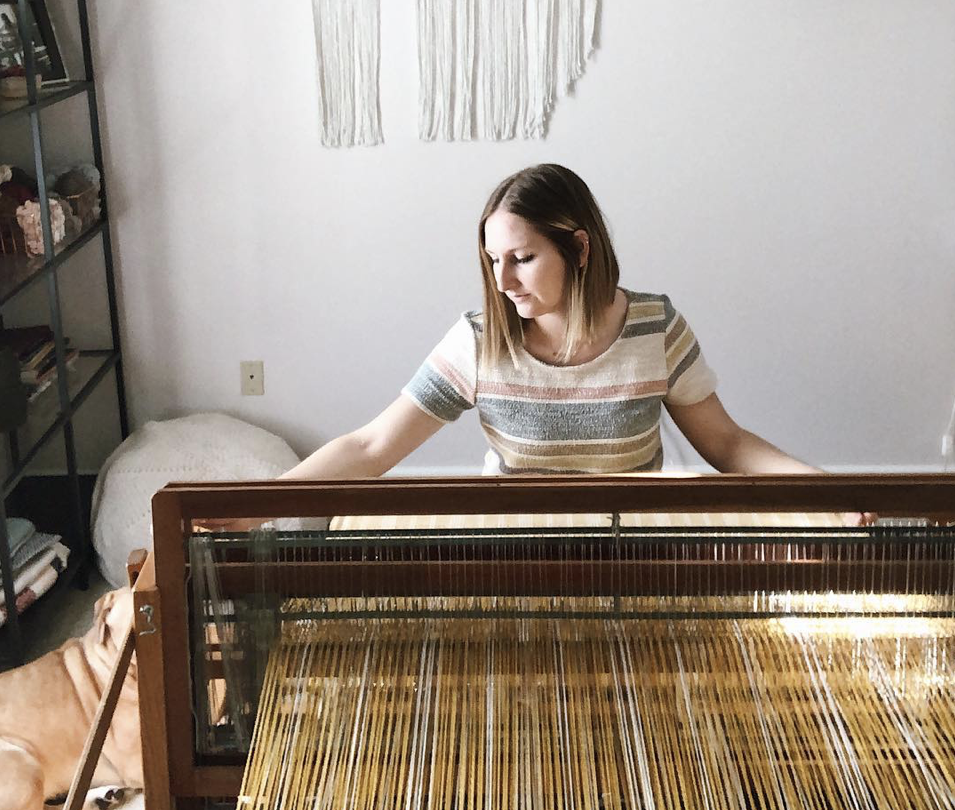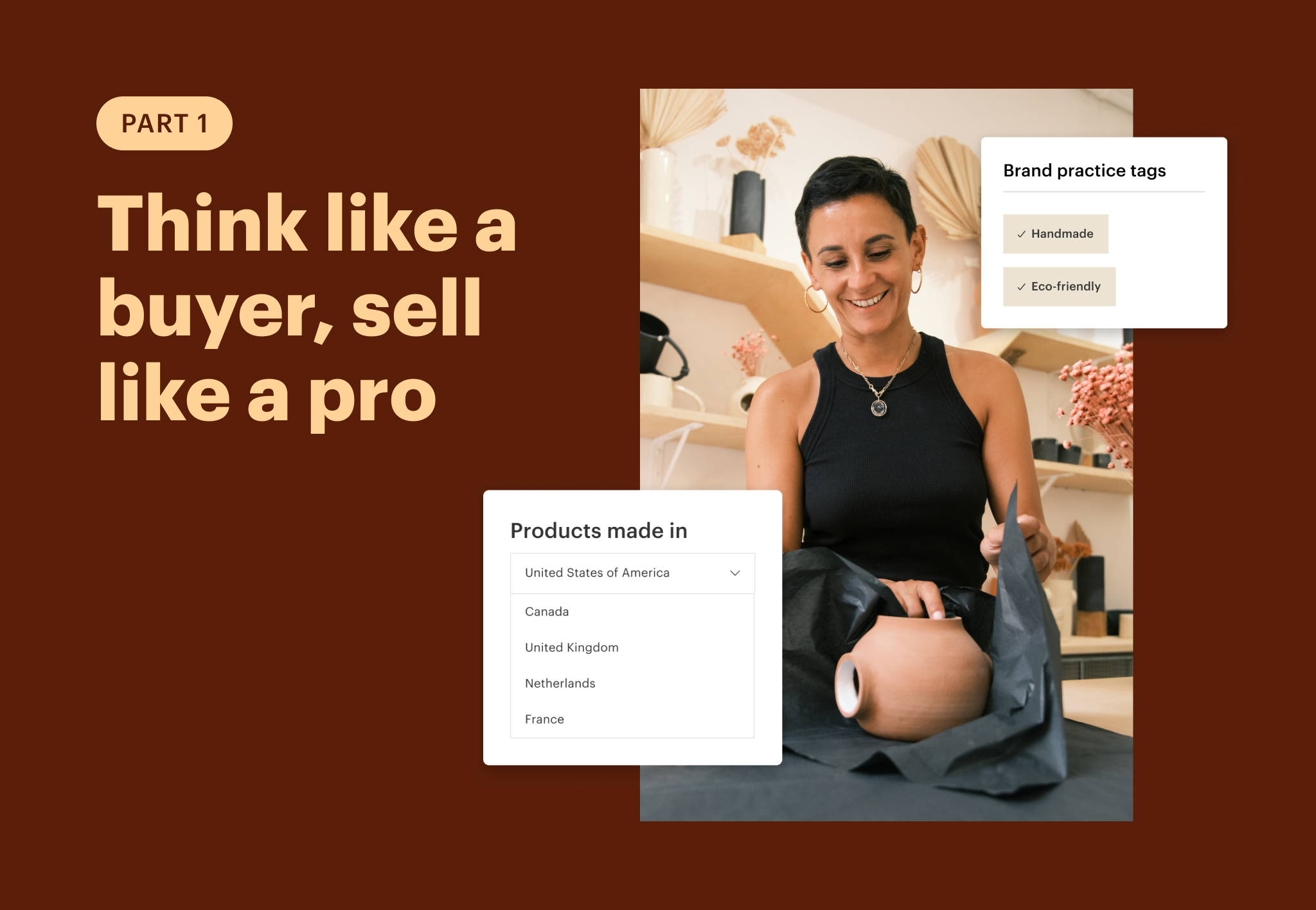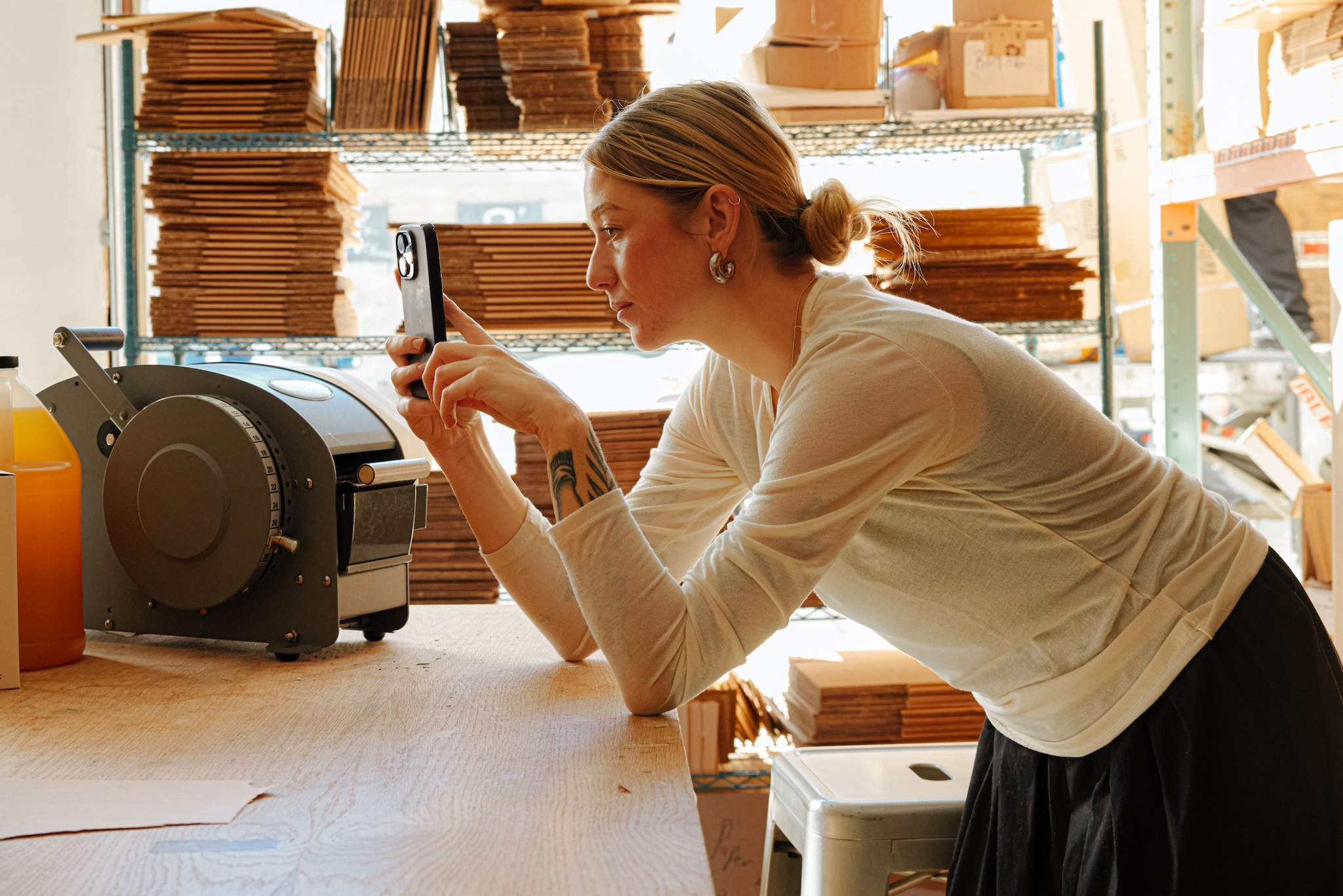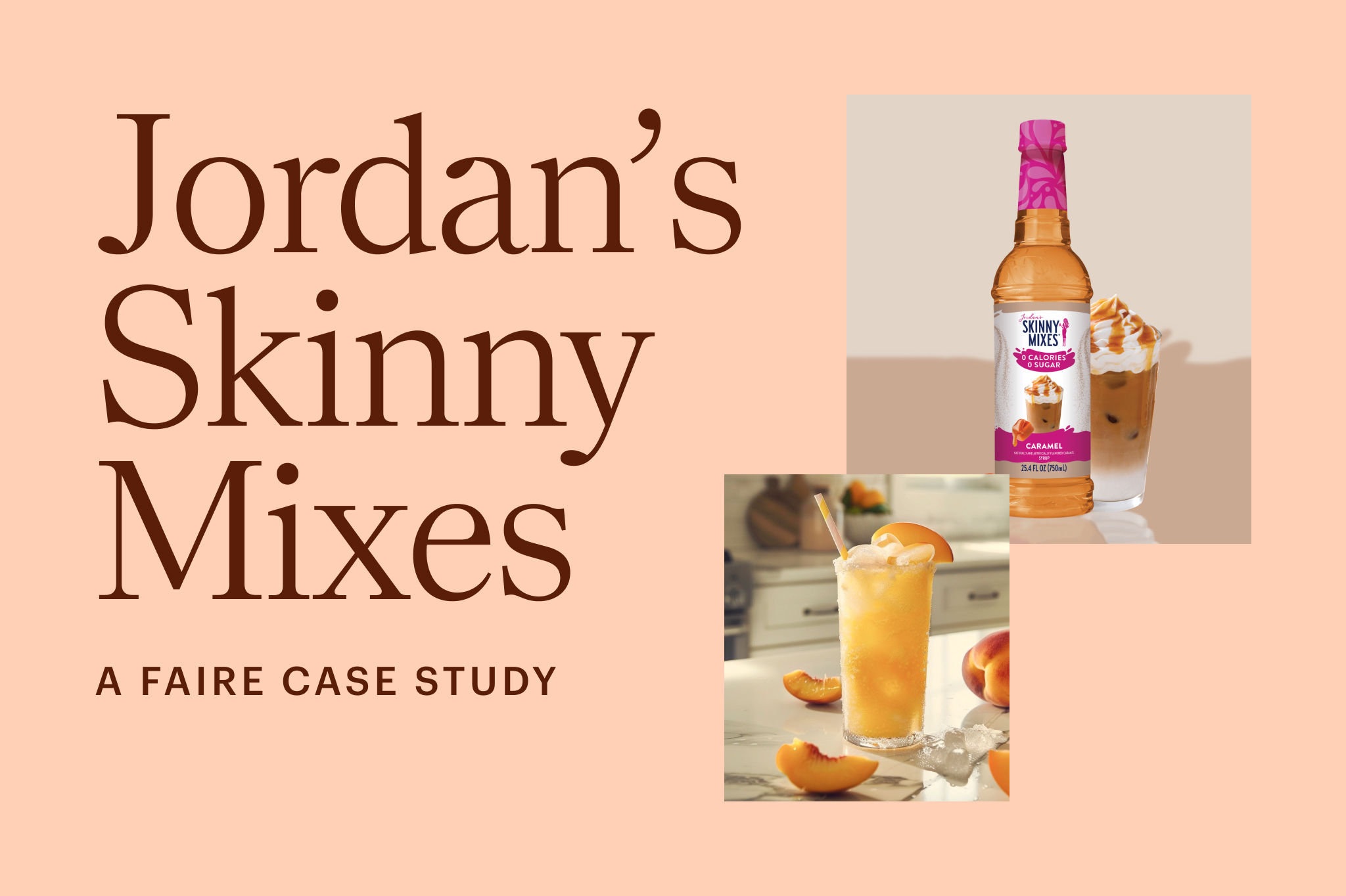

Brick & Order, Faire’s podcast for wholesale brands and independent retailers, is back for a special two-episode holiday season!
In this week’s episode geared toward our brand community, we spoke to wholesale brand owner Emily McDowell and brand consultant Nataley Shepherd about effective holiday tactics.
In this article, we’re sharing Nataley’s insights. Nataley has over eight years of experience with her own handwoven goods brand. She’s also worked as an operations manager and marketing director for two other successful brands. Now, through her brand consultancy Studio Shepherd, Nataley educates brands on the tools and systems needed to build a sustainable wholesale business. We chatted with Nataley about practical strategies for intentional promotion this holiday season.
We’re sharing an abridged version of our chat with Nataley. Tune in to the ninth episode of Brick & Order to hear from our community and industry experts in the Faire network. We’re glad to be back!
I have this rule: if you show up 75% of the time serving your customers first to inspire and connect with them, then you can show up and confidently promote your brand the remaining 25% of the time.
Nataley Shepherd
Faire: I hear you’re an artist by trade. How did you find your love for crafting and art?
Nataley Shepherd: I’ve always loved making stuff with my hands, but in school, I was actually more drawn to math and science classes. That led me to get a pre-vet degree. But I found myself, after two years in the science building, hating life and having one of those pivotal moments: “What am I doing?”
I tried to avoid art, but I ended up having the support surrounding me to go for it and get an art degree. I honestly loved every single second of it. I specifically found the weaving studio to be the place where I felt aligned.
After I graduated — and I think a lot of people with art degrees do this — [I said to myself], “Okay, what do I do with this art degree besides teach?” I didn’t know the first thing about business. After hopping between a few random jobs, I luckily landed a job as a maker for a handmade brand. I went from being the maker to their full-time manager within six months. I saw the company grow so quickly and learned on the job; no task was off the table. And I got to use some of that art degree through product development!
Faire: In your current role — helping brands grow their business — where do you start with most clients?
Nataley: I like to start with unveiling their brand. Most of my clients have some level of [defining] their brand and what it means, but they didn’t ever sit down and build their brand on a solid foundation, which is part of the process. When you come and work with me, I like to ask those hard questions.
Faire: What do you want to be known for? What impact do you want to be making?
Nataley: I like to unveil the heart and soul of their brand and help [clients] find those things that are going to make the difference. Your purpose, vision, mission. Your values, your ideal customer, and then your voice and your visuals. Generally this allows you to be able to pivot as things come, but you have a foundation.
This foundation is key to having a sustainable brand, but it also sets you apart and it [helps you evolve into] a sought-after brand that is making waves in the world and truly standing the test of time.
Faire: Do you approach work with newer brands and more experienced brands differently?
Nataley: I think everybody can benefit from going back to the foundation and really revisiting their mission statement. Are you still living that out in your messaging and how you’re running your business, especially as you start to create teams?
My ultimate goal is [to help brands be as] efficient as possible before adding team members. I really like asking the question, “What do you want to be known for beyond the physical product?”
Faire: I find that makers and brands are not sure how to effectively leverage email without feeling spammy. How do you help brands feel invested in email as a channel?
Nataley: Email marketing is probably not the sexiest form of marketing, but it is my favorite for a lot of different reasons. You can really bring out your brand with your email marketing. I believe that it’s the most simple way to start showing yourself, your personality, and your mission to your customers in a very personal intimate space.
The reason I believe email marketing is one of the best investments to make is that it has the highest potential to bring in amazing returns without a [huge] time commitment. It’s also going to bring longevity to the relationship with your customers, because it’s building that relationship with them in their inbox — in their most personal space — so that they can trust you as a brand.
I see brands only sending emails when they release a product or run a sale. When I think of a successful brand, I think that they’re showing up to serve first and then promote second. In email marketing, and actually all content marketing, I have this rule: if you show up 75% of the time serving your customers first to inspire and connect with them, then you can show up and confidently promote your brand the remaining 25% of the time. It’s not going to feel spammy because you served first and you’re promoting second.
I want people and brands to be able to show up and serve their customers 75% of the time so that they can promote confidently the remainder of the time.
Faire: As brands head into the holiday season, what cadence do you recommend for email marketing?
Nataley: Sticking to that 75/25 rule — the more you show up then the more you can promote. So the cadence should increase when you’re wanting to run some promotions. It really depends on the specific goals of the brand, but at least once or twice a month, email your list so that you’re showing up consistently. When you’re running a promotion, like a Black Friday sale, I’d email more often because you need to have those reminders [in their] inboxes a bit more during the holiday season.
For example, for Small Business Saturday, you could pop into their inbox with an email outlining some of your favorite small businesses as a reminder for them to support local. Then you can also put a reminder in there, like “My sale is still going on throughout this weekend!” Within that simple email, you’re helping your customers by giving them ideas and inspiration and you’re speaking to your values by supporting small businesses. You’re also confidently promoting your amazing product; it doesn’t have to be one or the other.
Faire: What are best practices that you recommend on the social media front?
Nataley: I always start with content marketing. Within social media, hone in on your messaging, values, and visuals so that you’re organically converting your followers into customers. That’s really important before you start putting paid ad boosts behind your posts. Stay consistent — whatever that means to you. Make sure you’re providing quality content over quantity.
Another best practice is setting up an Instagram shop tag before the holidays. People are busy, and it’ll save them time and make it easier to purchase your products if you have that shopping tag on your posts. For brands that are considering paid ads, first make sure your messaging and visuals are converting to sales organically, but also that you have a plan for that traffic. My favorite plan is to convert paid traffic into traffic that you own, which would be your email list.
Faire: Many brands are bracing themselves for a very unusual holiday season. What tactics do you recommend to help brands stay focused on what they can control over the next few months?
Nataley: Serve first and truly remember your why.
Another tactic that I use personally is positive mantras, just to keep our mindset right. One is: “The right customers will come in and out of my life.” Or, “I can do hard things. Let this be fun.” And, finally: “Failure is an attitude, not an outcome.”
Faire: What are your predictions on the future of marketing for small brands?
Nataley: I see that businesses that are more socially conscious and responsible are gaining more momentum and it gets me excited for being able to even shop more locally now.
I really think small businesses are going to be able to make a name for themselves and come back stronger than ever.
You can subscribe and listen to Brick & Order on Apple Podcasts, Google Podcasts, SimpleCast, Spotify, and Stitcher.




